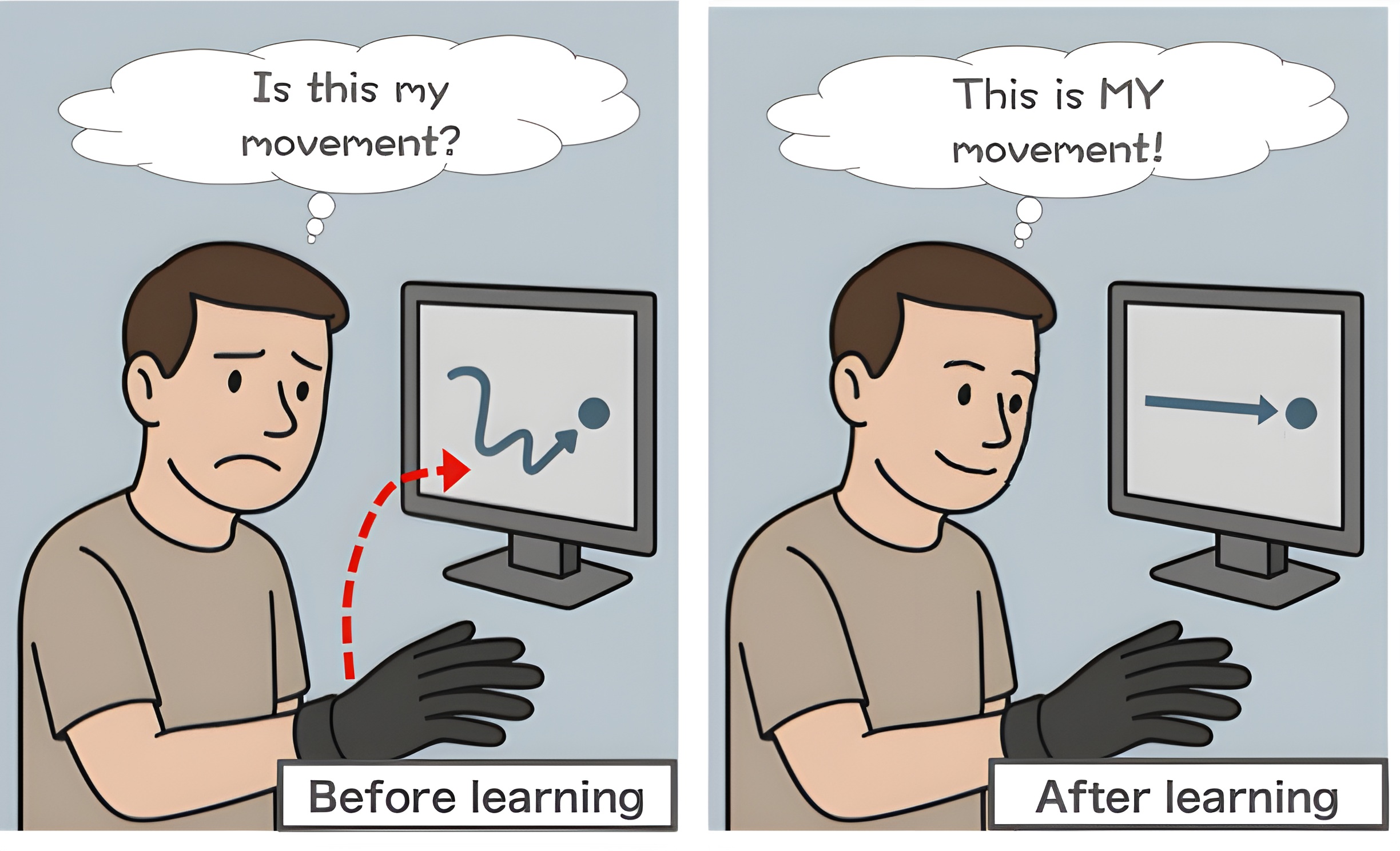The sensation of controlling one's body and things in the environment is known as sense of agency (SoA). Not only is SoA pivotal for tasks and well-being in everyday life, but its mechanisms have become increasingly important for the development of human-computer interfaces in new technology. This need has fueled research in this area, in particular to understand how SoA is generated from scratch in unfamiliar environments. Researchers at the University of Tokyo performed experiments involving hand-to-screen mapping using a specialized glove and highlighted the role of motor exploration in generating experience of self-agency. Their findings could contribute to future health and technology applications.
Traditionally, SoA has been explained by a framework called the comparator model. "According to this model, the brain maps the predicted outcomes of actions, referred to as an internal model. SoA arises when those predictions match with actual sensory feedback," said Takumi Tanaka, assistant professor at the University of Tokyo's Graduate School of Humanities and Sociology and co-author of the current study.
An issue arises when considering acquisition of new motor skills, such as learning a sport or relearning everyday activities after a neurological injury. While the comparator model assumes that outcomes from actions are partly predictable, new learners instead often attempt actions first and explore what happens as a result. "This process is called motor exploration, which helps form the internal model and generalize the learned outcomes," said Tanaka.
The team set out to understand how SoA develops in new motor learning scenarios. To address this, it was necessary to track changes in SoA from the pre-learning stage where predictions are yet to be formed.

The motor learning task chosen for the study involved a data glove to control a cursor on the screen through finger movements. The investigation was divided into two experiments. The first required participants to learn the hand-to-screen spatial mapping from scratch through trial and error. At each learning phase, the researchers measured how strongly participants felt that they were in control of the cursor, including when the cursor movement was subtly distorted in space or time. The results showed that during the pre-learning stage, participants primarily relied on temporal synchronicity of hand and cursor movements to judge whether they were in control. "After sufficient practice, however, participants would feel that the cursor movement aligned with their own when it adhered to the learned mapping — a trend that was more pronounced in those who achieved higher proficiency," said Tanaka.
No similar enhancement in SoA was observed in the second experiment, which was designed to suppress motor exploration by having participants simply imitate presented gestures to transport the cursor to a target position. "This," according to Tanaka, "indicates that merely memorizing gesture-to-cursor associations is not enough; to build a strong sense of agency, learners must actively discover the underlying rules, for instance, that bending the index finger moves the cursor to the right. We call this a structural representation, and it seems to develop through motor exploration."
This study provides key insights into the evolution of SoA during the acquisition of new motor skills. It enriches existing SoA frameworks by elucidating the origin of the comparator process, and could help refine applications in rehabilitation, virtual reality and brain-machine interfaces in the future.






